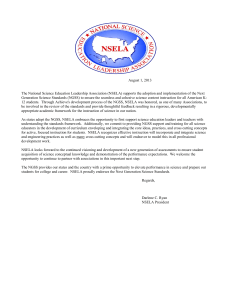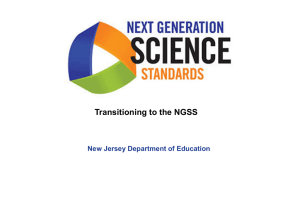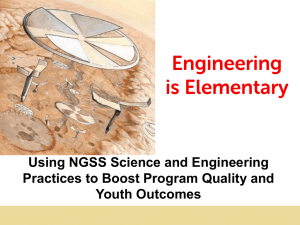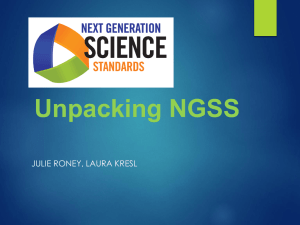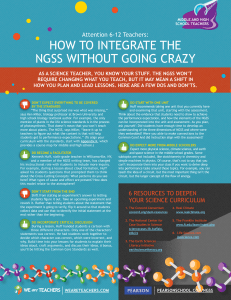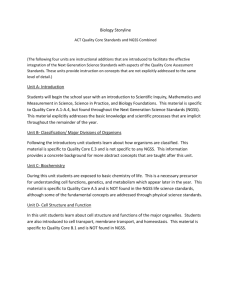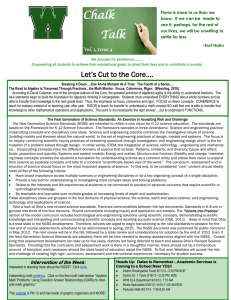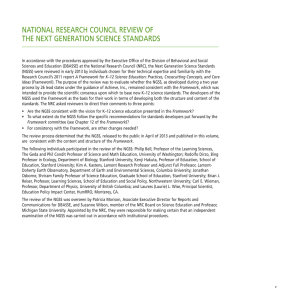The Next Generation Science Standards (NGSS)
advertisement
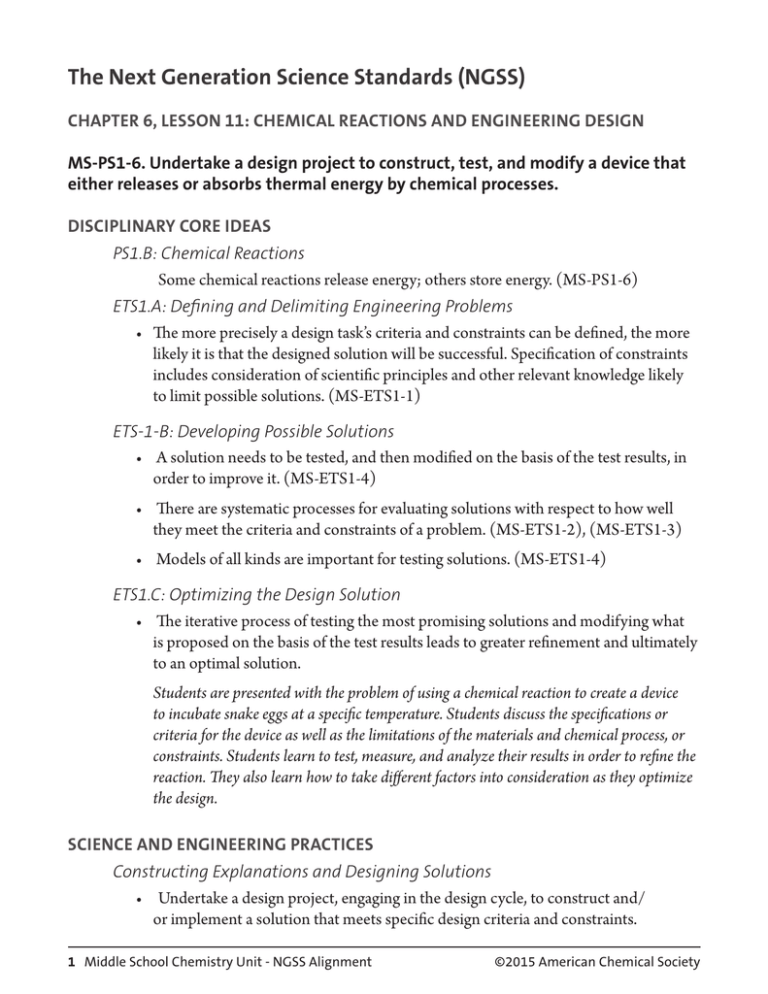
The Next Generation Science Standards (NGSS) CHAPTER 6, LESSON 11: CHEMICAL REACTIONS AND ENGINEERING DESIGN MS-PS1-6. Undertake a design project to construct, test, and modify a device that either releases or absorbs thermal energy by chemical processes. DISCIPLINARY CORE IDEAS PS1.B: Chemical Reactions Some chemical reactions release energy; others store energy. (MS-PS1-6) ETS1.A: Defining and Delimiting Engineering Problems • The more precisely a design task’s criteria and constraints can be defined, the more likely it is that the designed solution will be successful. Specification of constraints includes consideration of scientific principles and other relevant knowledge likely to limit possible solutions. (MS-ETS1-1) ETS-1-B: Developing Possible Solutions • A solution needs to be tested, and then modified on the basis of the test results, in order to improve it. (MS-ETS1-4) • There are systematic processes for evaluating solutions with respect to how well they meet the criteria and constraints of a problem. (MS-ETS1-2), (MS-ETS1-3) • Models of all kinds are important for testing solutions. (MS-ETS1-4) ETS1.C: Optimizing the Design Solution • The iterative process of testing the most promising solutions and modifying what is proposed on the basis of the test results leads to greater refinement and ultimately to an optimal solution. Students are presented with the problem of using a chemical reaction to create a device to incubate snake eggs at a specific temperature. Students discuss the specifications or criteria for the device as well as the limitations of the materials and chemical process, or constraints. Students learn to test, measure, and analyze their results in order to refine the reaction. They also learn how to take different factors into consideration as they optimize the design. SCIENCE AND ENGINEERING PRACTICES Constructing Explanations and Designing Solutions • Undertake a design project, engaging in the design cycle, to construct and/ or implement a solution that meets specific design criteria and constraints. 1 Middle School Chemistry Unit - NGSS Alignment ©2015 American Chemical Society (MS-PS1-6) Planning and carrying out investigations Asking Questions and Defining Problems • Define a design problem that can be solved through the development of an object, tool, process, or system and includes multiple criteria and constraints, including scientific knowledge that may limit possible solutions. (MS-ETS1-1) Developing and Using Models • Develop a model to generate data to test ideas about designed systems, including those representing inputs and outputs. (MS-ETS1-4) Engaging in Argument from Evidence • Evaluate competing design solutions based on jointly developed and agreed-upon design criteria. (MS-ETS1-2) Students create a prototype model of a device to incubate a snake egg at a specific temperature range. They conduct trials adjusting the concentrations in a reaction between baking soda solution and calcium chloride to achieve the specific temperature range and to inflate a zip-closing plastic bag without popping. Students then consider different factors regarding insulation and heat transfer to optimize the design of the device. CROSSCUTTING CONCEPTS Energy and Matter • The transfer of energy can be tracked as energy flows through a designed or natural system. (MS-PS1-6) In this lesson, students see that a chemical reaction can release energy and that the energy can be used in a practical way. After discovering a combination of reactants that produces the required temperature range, students need to consider how to insulate the device against excessive heat loss through heat transfer. Students consider using a Styrofoam cup or wrapping the cup with an insulating material. They may also consider designing a lid to reduce loss of heat through heat transfer. 2 Middle School Chemistry Unit - NGSS Alignment ©2015 American Chemical Society

